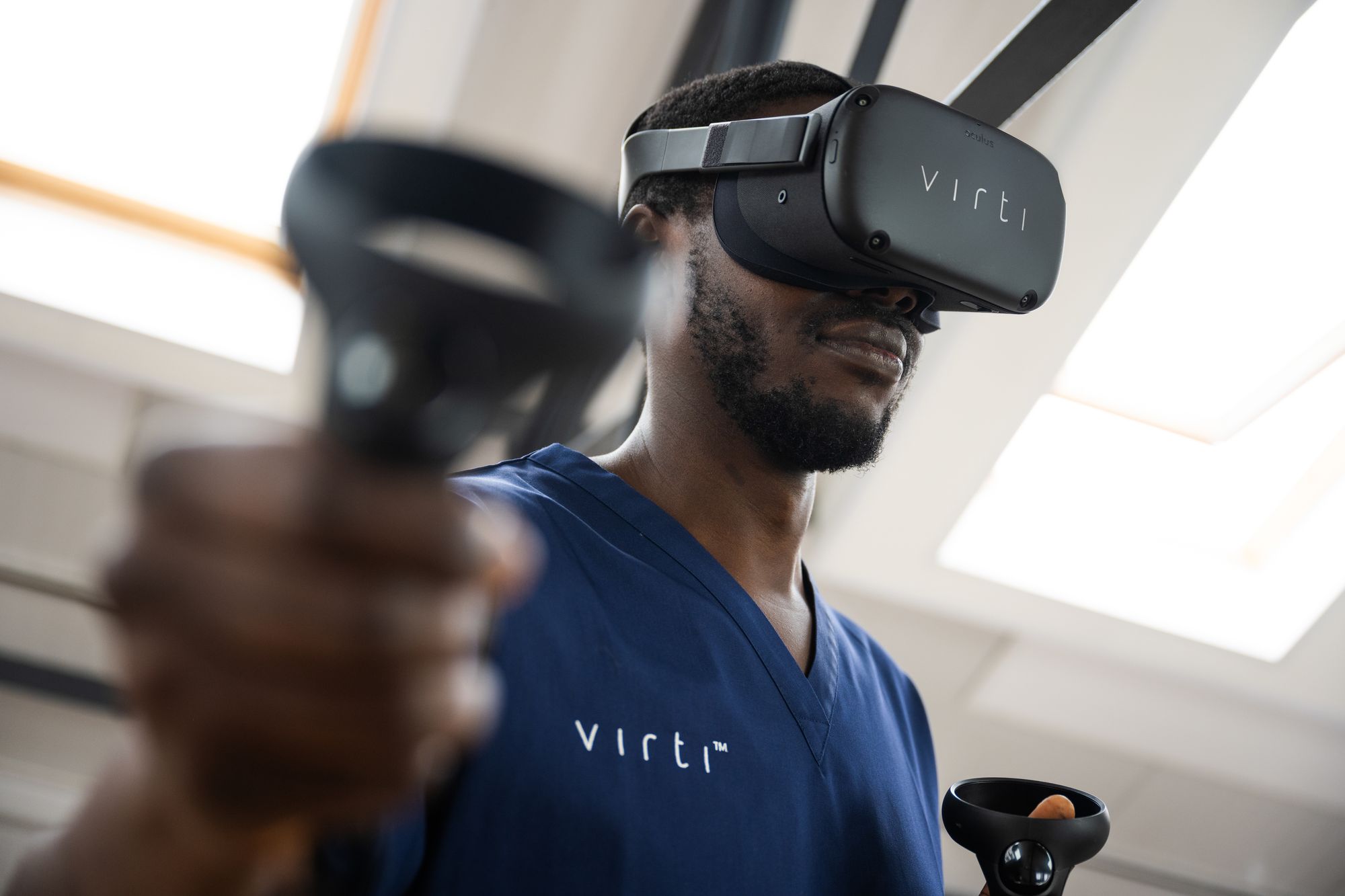Using immersive technologies to decrease costs of safety incidents
Check out this article to learn more about how immersive technologies can help you leverage your staff's training and decrease costs of safety incidents.

The transportation and logistics sector has faced tremendous pressure over the last 24 months. Whether it has been the impact of COVID-19 ripping through the best-laid supply chains, the focus on digitalisation, the hydrogen economy, the impact of climate change, technological innovation, or the rapid advances in automation, the board agenda has been packed with macro issues that affect the company strategy and overall customer experience.
These issues have not been in isolation and have been further cemented by actions such as Brexit and ‘the great resignation’. These two factors have had an enormous impact on the sector from a UK and EMEA standpoint, whilst also permeating their way into the wider globalized economy.
Recruitment, onboarding, and training are firmly taking their place on the board agenda as companies try to keep up with the increased demand created by our new ‘delivery-based’ consumer market whilst having to compete for staff at almost every level. To put into context a Road Haulage Association (RHA) survey of its member's estimates there is now a shortage of more than 100,000 qualified drivers in the UK alone, with similar proportional needs felt across Europe and the US.
As firms scale up their recruitment drive and make use of Government-backed training schemes, such as supported license acquisition, internal training and onboarding is needing an overhaul to align to the new objectives and strategies companies are working towards. Traditional on-the-job training, conducted face to face poses its own challenges in the socially distanced world of COVID-19, whilst still struggling with the age-old adage of lacking scalability. As companies face the need to train more staff, faster and more efficiently, face-to-face training is struggling to keep up with demand.

Whilst it is relatively simple to roll out a series of digital learning assets, such as eLearning packages, to onboard staff to a new company or to introduce a new product or workflow, we operate in an industry where safety is king and we are left asking ourselves, is 20 minutes of clicking next on a PowerPoint really a sufficient way to provide mission-critical safety training for our staff? Do they come away from that screen any safer or have we simply checked off the tick box on our compliance list? Fundamentally, the question we need to ask ourselves is whether our training has mitigated the safety risk and impacted the overall costs of safety incidents or simply moved the issue from training into operations.
There is also the human factor to consider here: It is not good enough to simply mitigate risk from a business perspective; we have a duty of care to our employees to ensure they are safe in their roles whether in the office, on the shop floor, or out in a vehicle. As the costs of incidents keep increasing and the challenge of retaining staff continues to grow, putting their safety at the heart of the company ethos makes good business sense.

A new methodology of training is required if we are to meet the new demands placed upon us. Not only does the new learning need to be impactful, engaging, and scalable it also needs to meet the changing demands of the company and the marketplace. Rapid development along with rapid delivery is required if we ever hope to get ourselves back on par with the demand curve created by the market forces upon us. This is where video-based Virtual Reality (VR) tools have been created to meet the demand. Virti for instance has created an immersive video tool that allows customers to create video-based learning interventions which are then published to VR headsets. By using VR headsets, we can create environments for learners where we are placing them in the heart of a scenario and allowing them to be fully immersed in the learning without the need for them to physically be in the location. Much like face-to-face on-the-job learning but rather than being a snapshot in time, these VR-based experiences are repeatable and scalable for the customer and their learners - ensuring that all staff has access to the best of breed safety training without anybody slipping through the cracks.
Along with providing learners with a comparable, if not more consistent, learning experience to face-to-face training, learning undertaken using software like Virti has the added benefit of being fully tracked with learning analytics. Firms can understand every aspect of a learning experience from time taken, questions answered, interactions clicked through to data around dwell time and focus. All of the analytics are reportable from a compliance standpoint, whilst also giving customers insight into what is working well within the learning and perhaps which interactions are not performing as required.

What really sets these solutions apart from others is that the power to create, amend and iterate the learning sits firmly with the customer themselves. Companies can create as many learning experiences as required and monitor using the analytics tools that the learning is driving the desired outcomes. Where there is misalignment, departments can quickly and easily iterate the learning and publish a new version or create a new piece of learning to ensure the requirement is met.
Whilst in principle this all sounds great, there is still an elephant in the room when it comes to VR as a training tool. Costs. VR is still seen by many as a ‘new’ technology, but even the first headset was created before man first stepped on the Moon. This perception however has led many firms to shy away from VR as the expectations around headset investment and the costs of creating bespoke/custom content for learning far exceed the potential cost saving of face-to-face peer lead learning but times are changing. With the acquisition of Oculus by Meta / Facebook, VR headsets now sit on the board agenda of one of the world's biggest companies and we have seen the costs of hardware tumble over the last few years. This has been further impacted by the next generation of headsets which pack a huge amount of technology into a device that retails for under $300.
With the price of hardware now being below the costs of a smartphone and tools such as Virti stepping in to provide a scalable publishing tool for training, we have reached the tipping point where we can look at how solutions such as video-based VR training can mitigate the human and financial impact of safety incidents within the transportation industry.
In order to keep safety-critical organizations running safely, it is important to provide adequate training for employees. The use of interactive technologies like Virti can help make this training more effective and immersive, so that employees are better prepared for dangerous scenarios. If you're responsible for the safety of your organization, we urge you to book a demo with us and see how Virti can help you avoid costly incidents.

Ready to Embrace the Future of Training? Contact Virti Now!
Want more information and advice on how to transform your workplace training? Get in touch with a member of the Virti team.


